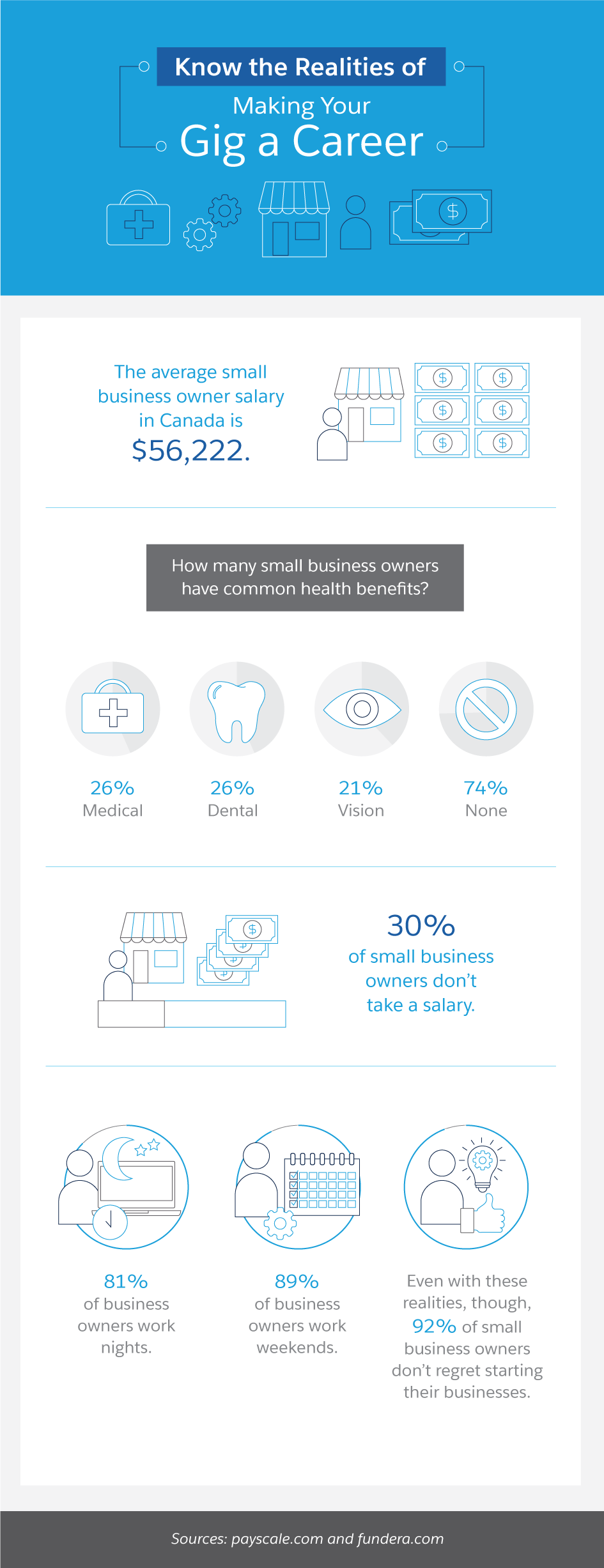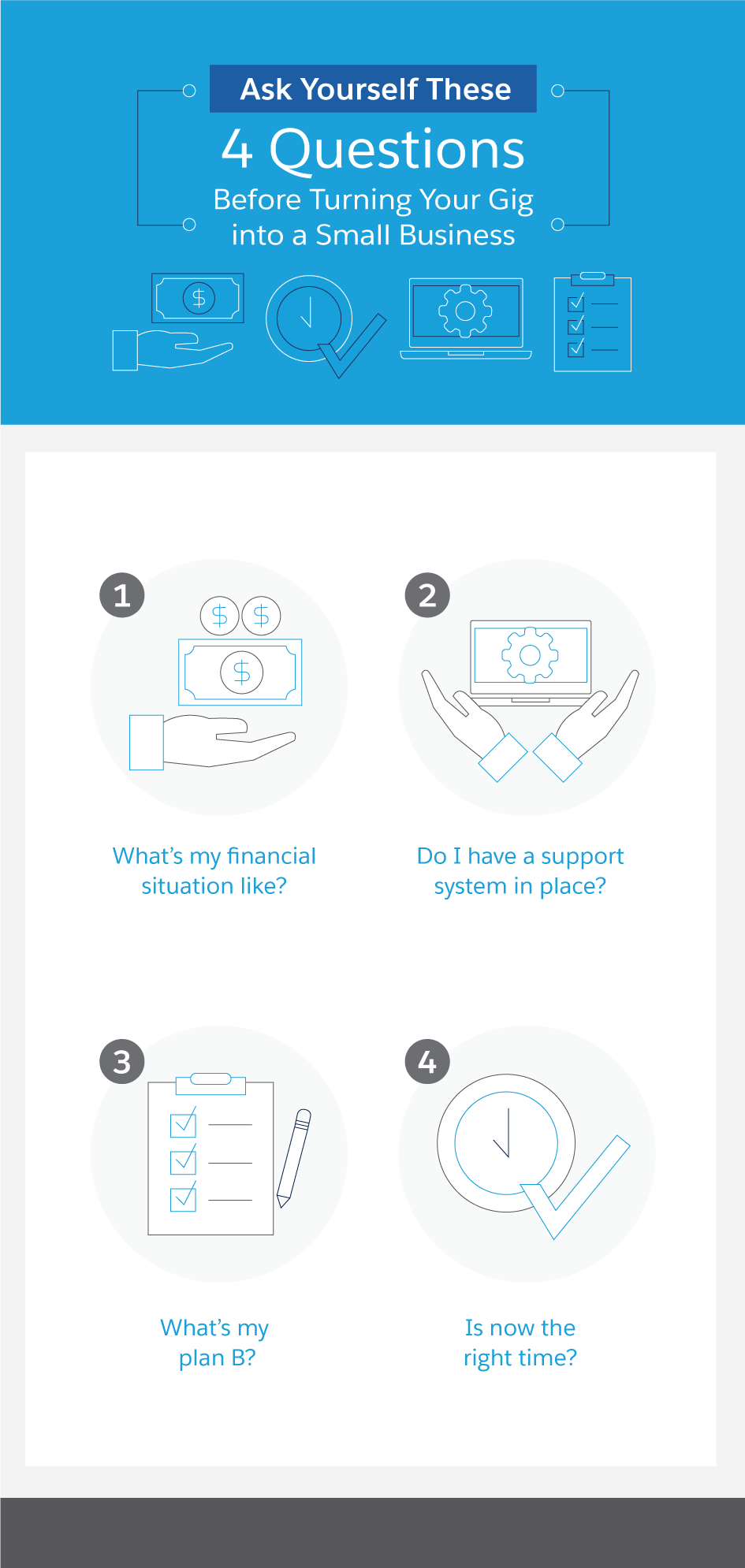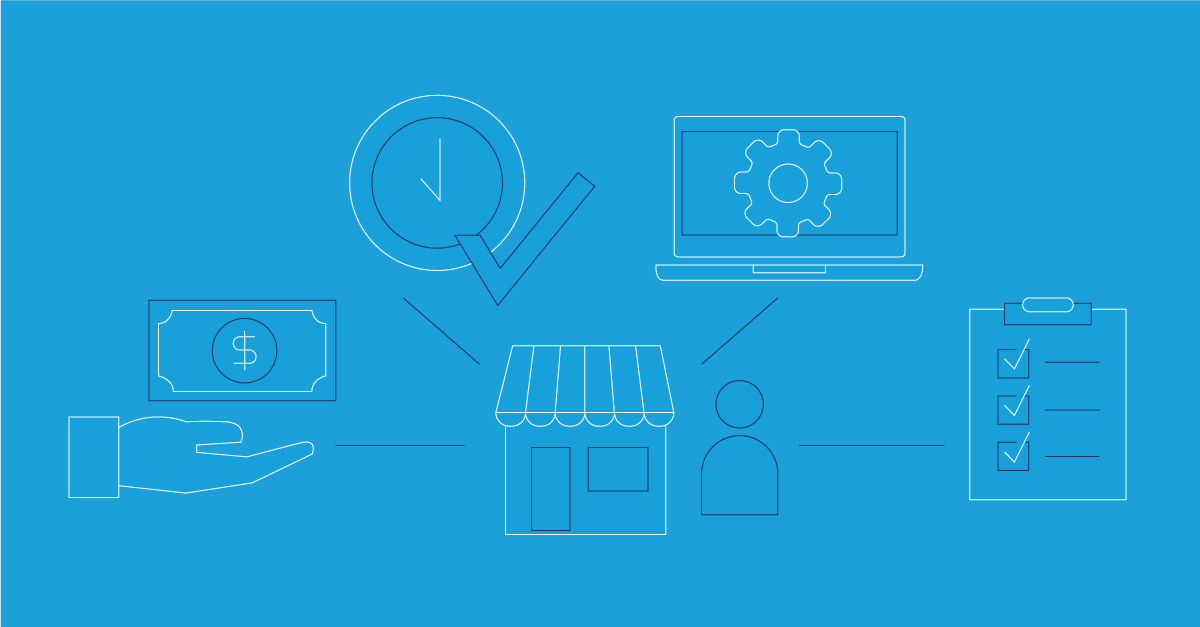By Kathleen Garvin
“Behind every successful business is a successful side hustle.”
To be fair, that’s not exactly a saying, but test-driving a potential full-blown business on a part-time basis isn’t a bad idea.
A side hustle or side gig is typically described as a small business operation someone runs in addition to their nine-to-five. It’s usually seen as a smaller venture compared to a full-time salaried job. There are a variety of side hustles — running an ecommerce store for your artwork or crafts, working as a freelance writer, and moonlighting as a digital marketing consultant, to name a few. Some gigs are seasonal, and others can be completed from the comfort of your own home.
Side hustles offer a lot of variety. On top of learning new skills and making money, you can decide how big or small you want to keep your side business. One day, you may decide to make it your main source of income.
If you’re on the cusp of becoming your own boss, consider these factors before making the transition.

Why a Side Gig is a Smart Idea
Maybe you’ve had a business idea marinating in the back of your mind for a while, or maybe you’ve worked in a field long enough to know you could do something better and more cost-effectively. Small businesses are personal, and your “why” will vary from someone else’s reason.
Before you dive headfirst into a new business venture, it pays — sometimes quite literally — to begin on a small scale. Starting with a side hustle is a smart move for a number of reasons.
You get to test the waters. A business idea might sound good in your head or look great on paper but, truth is, you won’t know for sure until you put yourself out there and get to work. For example, you could find your business will only work during a certain time of year or plays for a niche audience.
You’ll learn what you can make. Plenty of websites share salary information based on career fields, geography, and years of experience. However, depending on your skillset and the market’s demands, you may have trouble commanding what you’d like to make per hour or per project. Of course, the opposite — lots of demand and people throwing a ton of business your way — could happen, too.
You’ll see who’s really buying. Once you share your business news, friends and family may offer their praise and commitment to buy your products or services. While that type of support is great, when push comes to shove, a verbal commitment or show of intent might not result in you actually making a sale.
You can work out the kinks. Alternatively, maybe people do want to buy your services, but you lose them somewhere along the buying process. When your operation is small, you can more easily fine-tune your processes and test different prices and packages.
You may not like making your side gig your career. While you enjoy gig work on occasion, you could find that doing it full time dulls your drive for it. People who turn a beloved hobby or creative pursuit into a 24/7 business may find this especially true.
While operating a side gig on top of a more typical job can be a juggling act at times, you can rest a little easier knowing you still have a regular source of income coming in. Going all in on a company can put a lot of pressure on a new business owner, especially when you look at the numbers: Small business owners in Canada, on average, earn a salary of $56,222. Some may take no salary at all. To be able to focus on the business itself without the weight of financial and mental pressures is huge.

Figure Out Your Business Plan
A business plan is a must, no matter what you’re selling. Think of it as a GPS that helps map out and grow your company. Don’t get caught up in the romance of an overnight success story — businesses that survive have done the foundational work.
You likely have an idea of your mission, ideal customer, and your product or offering. If you don’t, now’s the time to put pen to paper. You want to zero-in on your goals, your journey to the market, how you’ll measure success, and obstacles you may encounter along the way. You can keep this high level at first, but you’ll want to get more specific the further you go.
You need to include the basics:
- Executive summary: A brief overview of everything that you outline in greater detail in the full plan
- Business overview: An explanation of what your company does or solves, and who you serve
- Products and services: A description of what you offer to the market
- Industry overview: What the current landscape looks like, and market and competitor research
- Marketing strategy: How you plan to market to your ideal users and the different verticals you’ll use
- Operations plan: Where you plan to operate (online only and/or physical locations), and any staff members you anticipate bringing on and for what roles
- Financial plan: What and how much money you have in the business, other monetary support you’ll need, and when you expect to be profitable
A good business plan helps you brainstorm and keeps you grounded. A well-outlined plan can also help you recruit team members and capture the attention of investors.
Build Your Network of Professionals and Resources
As you make the move from side hustler to fledgling small business owner, now is the time to build out your network and find resources to help you level up.
You can look to online and in-person communities related to your industry and business-owner groups. Your city may offer free or low-cost training for budding entrepreneurs. Perhaps it makes sense for you to hire a business coach. Lastly, you may want to seek out financial or tax professionals to help you set up your business structure, if you haven’t done so already.
Here are some final considerations ahead of making the leap.

Answer These Questions Before You Launch
Once you have your steady side gig and a business plan, you might feel the pull to go full-time growing stronger. Without quashing your momentum, you’ll want to dig a little deeper before it’s go-time.
Self-awareness is key here. Ask yourself the following:
- What’s my financial situation like? If you’re a team of one with no outside support, or you have a lot of debt, your business timeline will look different from someone else’s — and that’s okay. It’s essential to review your finances and see what you can comfortably take on.
- Do I have a support system in place? Running a business can be tough and isolating at times. It’s important to have people in your life, be they family, friends, online community members, or mentors, who can be there for you along the way.
- What’s my plan B? It can be unpopular among some crowds to have a backup plan. However, unless someone else is paying your bills, it doesn’t hurt to maintain good industry relationships and skills in case you need, or choose, to return to an office or other full-time role.
- Is now the right time? This is a personal question only you can answer. A layoff, death in the family, new baby — there are a lot of life moments that can influence your decision on whether now is the best time to become a business owner. Be honest about what you can handle. And most importantly, be kind to yourself.
After all that, you may decide to keep things small — and that’s perfectly fine. Not everyone has the desire to build an enterprise or make their side hustle their main gig. Part of being a good business owner is trusting your gut, and who knows what’s better for you than you?
Share "How to Transition a Side Hustle to a Small Business " On Your Site



